There are a couple of new LEGO books with building instructions I wanted to show you today. Both of them are by Canadian LEGO fan Charles Pritchett. If the name sounds familiar, it’s because we talked about some of Charles’ earlier books about expanding the LEGO Winter Village, instructions for custom LEGO BrickHeadz super heroes and villains, and building more dinosaurs and other extinct beasts to add to the #21320 LEGO Ideas Dinosaur Fossils set.
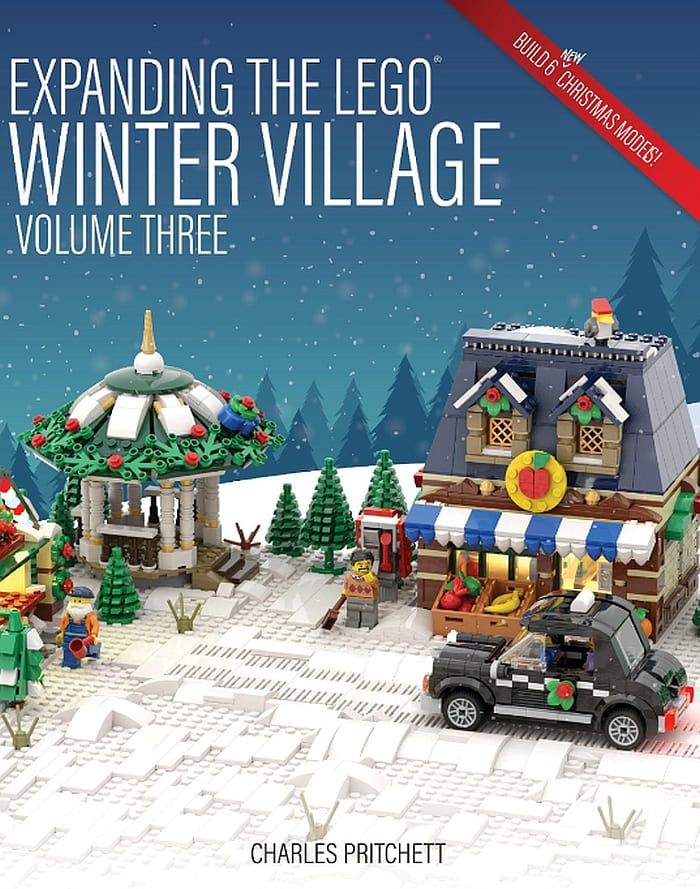
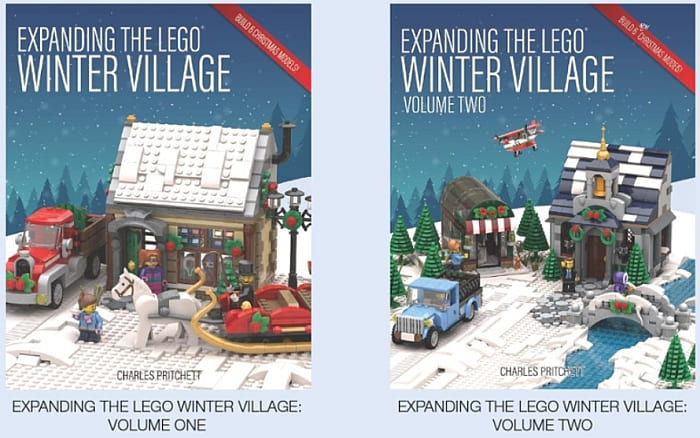
One of the new books by Charles is the third volume of Expanding the LEGO Winter Village. Expanding the LEGO Winter Village – Volume One includes instructions for a cute ski and snowboard shop, an old pickup truck, a classic car (both are excellent!), a lovely horse-drawn sleigh, and a couple of other smaller projects. Expanding the LEGO Winter Village – Volume Two features six more building instruction, including an old church, a winter greenhouse, a small cargo plane, a delivery truck, a good bridge, and a small stall for selling sweets. The all fit the charming style of the official LEGO Winter Village series.
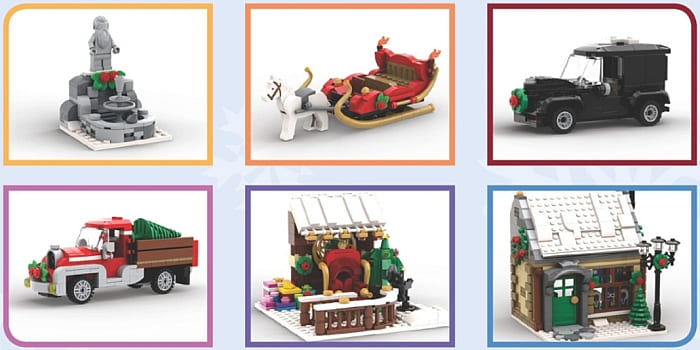
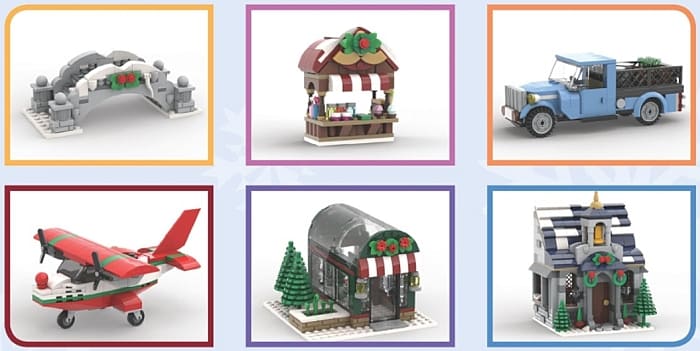
The recently released Expanding the LEGO Winter Village – Volume Three features another six projects; a village grocer, a festively decorated hot dog stand, a Christmas tree stand, a classic taxi, a small gazebo, and a snowmobile. As usual, all of the project include a parts-list and step-by-step building instructions that are easy to follow. All three books are available in downloadable digital format and as paperbacks.
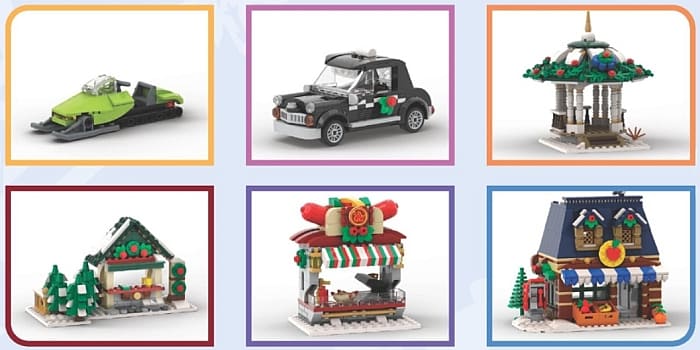
The books are printed by No Starch Press, which is well known for publishing high quality LEGO books. The colors are vibrant and beautiful, the paper high quality, and the text is just the right size for easy reading. You can get all three books directly from No Starch Press or via Amazon:
The second new book by Charles Pritchett I wanted to show you today was released just a couple of weeks ago. It’s titled the LEGO Train Project: 7 Creative Models. As the title implies, it includes instructions for seven projects, including a beautifully designed EMD FL9 Locomotive, a Powered Box Car, a Passenger Coach, a Depressed Flatcar, an Open Hopper, a Milk Tanker, and a Coal Gondola.

The Coal Gondola is the simplest project with 144 pieces, but it still includes some interesting building techniques, and the final model looks great. The instructions are for the red and light-gray version, but there are a couple of other alternate color schemes suggested in the book for variety.
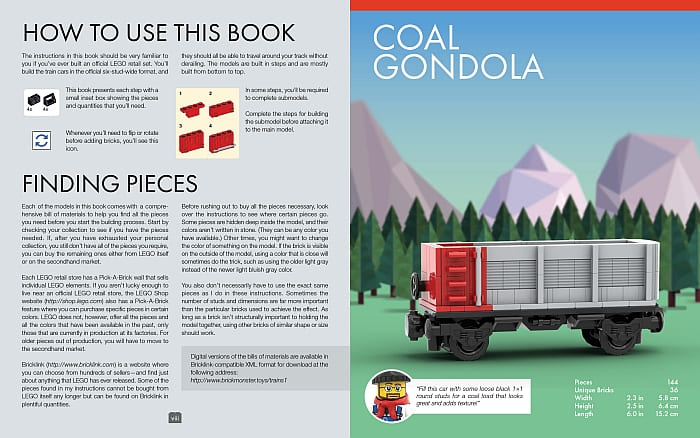
The second project featured in the book is called the Milk Tanker, but you can easily convert it to any other type of tanker just by changing the colors of the stripes and tanks (a couple of other alternate color suggestions are featured in the book). It’s a great model to add to any LEGO train, and it needs only 188 pieces.

The third project is an Open Hopper. This model uses 310 pieces and could also be constructed in other color combinations.
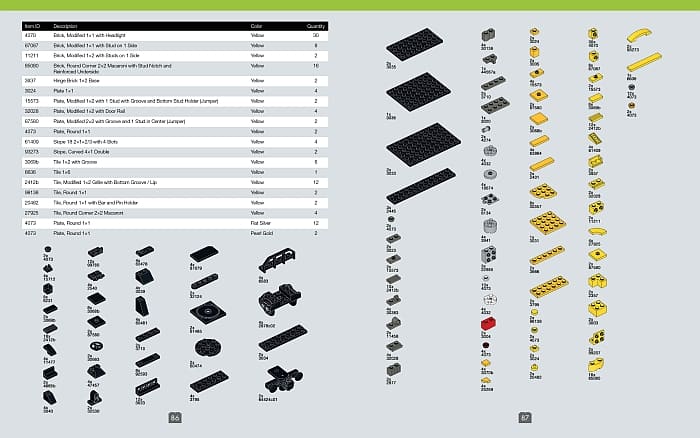
The Depressed Flatcar with Electric Load is the fourth project in the book. Once you build it, the flatcar could be used to carry pretty much anything. However, I appreciate that Charles included such an interesting load as a generator. This project uses 382 pieces and alternate color combos are included as well.
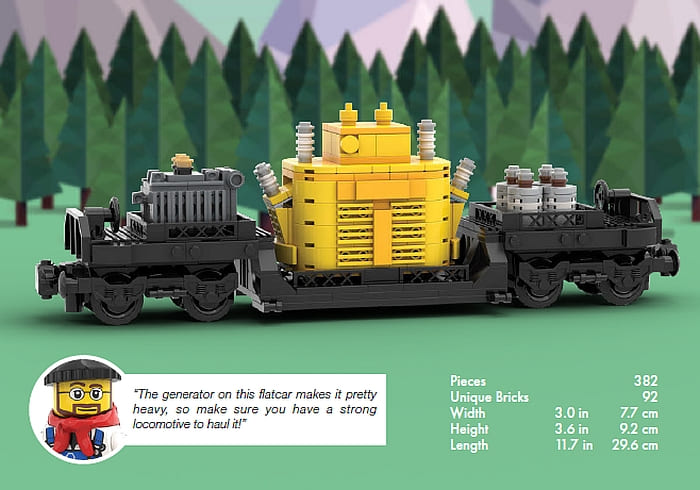
The next project is a Passenger Coach with 383 pieces. It comes with tables, so it can serve as a dining car, but if you need greater capacity for passengers, you can replace the tables with more seats. The main model has a tan/white/dark-gray color-scheme, and there are two other variations displayed in the book, one with dark-green as the main color, and the other dark-blue.
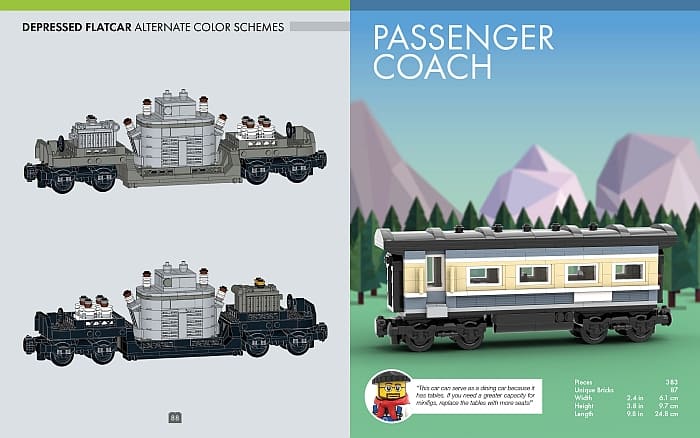
The Powered Box Car could be one of the most useful projects in the book. With its integrated LEGO Power Functions, this car alone could fully power any LEGO train. All the powered elements neatly fit inside the car and hidden by the box car exterior. The whole project is 144 pieces, including the Power Functions elements. Please note that the car can accommodate the components of both the older Power Functions (with the separate IR receiver), or the more recent LEGO Powered Up system. Again, two other color variations are featured in the book.

The final model featured in the book is the EMD FL9 Locomotive. Since this locomotive doesn’t have any power functions built in, you will have to pair it with the Powered Box Car, or come up with your own solution. I love that the angled stripes are all brick-built without the need of using stickers. I also really like the orange/white/black color-scheme, although other colors could be used as well (no alternate color variations are shown for this model in the book). This project uses 698 pieces, so look through the parts-list to make sure you have everything before you begin building.

Speaking of having the parts for these train projects, if you’re missing any of the pieces, you can get them from BrickLink. However, I do recommend that you start with at least one official LEGO train, because the hardest pieces to source are always the specialized train components, like the train wheels, couplers, tracks, etc. It almost always ends up being cheaper to just buy an official LEGO train rather than trying to get those parts from other sources. Several of them even include all the Power Functions elements so you can motorize your train right out of the box. If you want to check out the currently available LEGO trains, visit the trains section of the Online LEGO Shop.
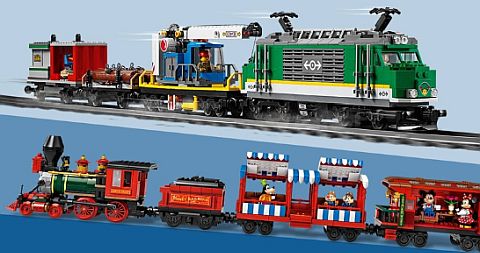
Going back to the LEGO Train Projects book, it’s a comprehensive and well thought out guide to building impressive, accurate, and aesthetically pleasing train components. The projects are detailed enough to be interesting and unique, without going over the top or wasting parts. The models also fit well with official LEGO trains, so if you already have a LEGO train, you can just pick and choose the cars you would like to add to it. I especially appreciate the inclusion of the Powered Box Car, as this is the easiest way to power any LEGO train. No need to modify the engine, or run wires between cars. And I also like the alternate color schemes featured in the book. They make it easier to visualize other color options.

If you are interested to check it out, the regular price of the LEGO Train Projects book is $24.95 – which is not cheap but fair in my opinion. The best place to get it is on Amazon, as they have a pretty decent discount: BUY LEGO TRAIN PROJECTS BOOK ON AMAZON
I hope you found this review helpful. If you have any questions or comments feel free to share below. And if you already have the train book or any of the LEGO Winter Village books we talked about here, you’re welcome to share your own review as well.
And you might also like to check out the following related posts:












I’m going to have to pick these up. They look fantastic.
The train book looks really good. I especially like the depressed car.
We have gotten the first two of the Winter Village books. The kids love it! Thanks for letting us know about the third one. We will definitely pick it up.
Thanks for this. Easy-peasy Christmas presents that will be appreciated.
That train book is intriguing. I like several of the models, like the engine and the battery cart. Added it to my amazong shopping list.
Do the trains have any super rare parts? That’s my concern. That I get the book, but I can’t get the parts needed to build the mocs.
One good usage for the white baseplates released earlier this year.
(I guess they could also be used for Frozen and Tatooine builds…)
Sorry, I meant Hoth …
Thank you so much for the unexpected review and kind words! As a note, only the trains book is being published by No Starch Press. The others are all self published.
Thanks again!
Hey, Charles, nice to have you over! And thanks for the clarification! 🙂